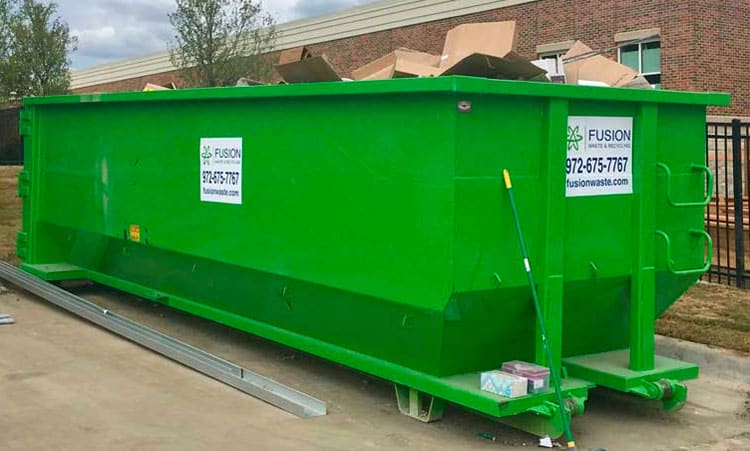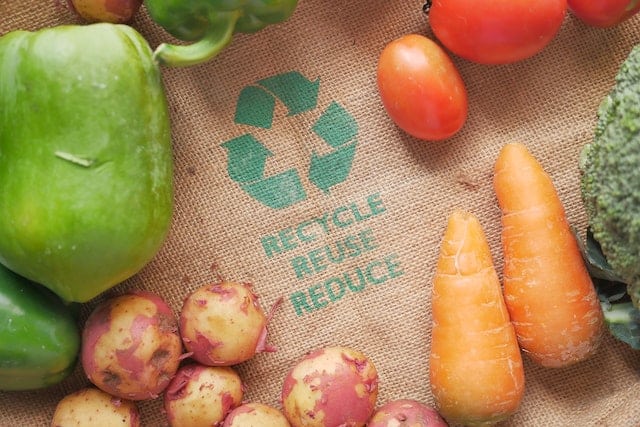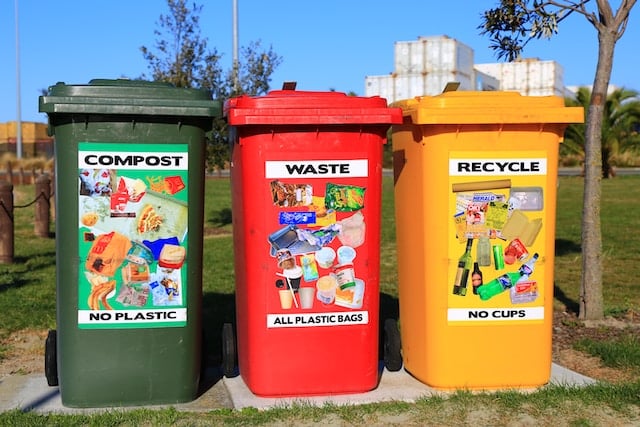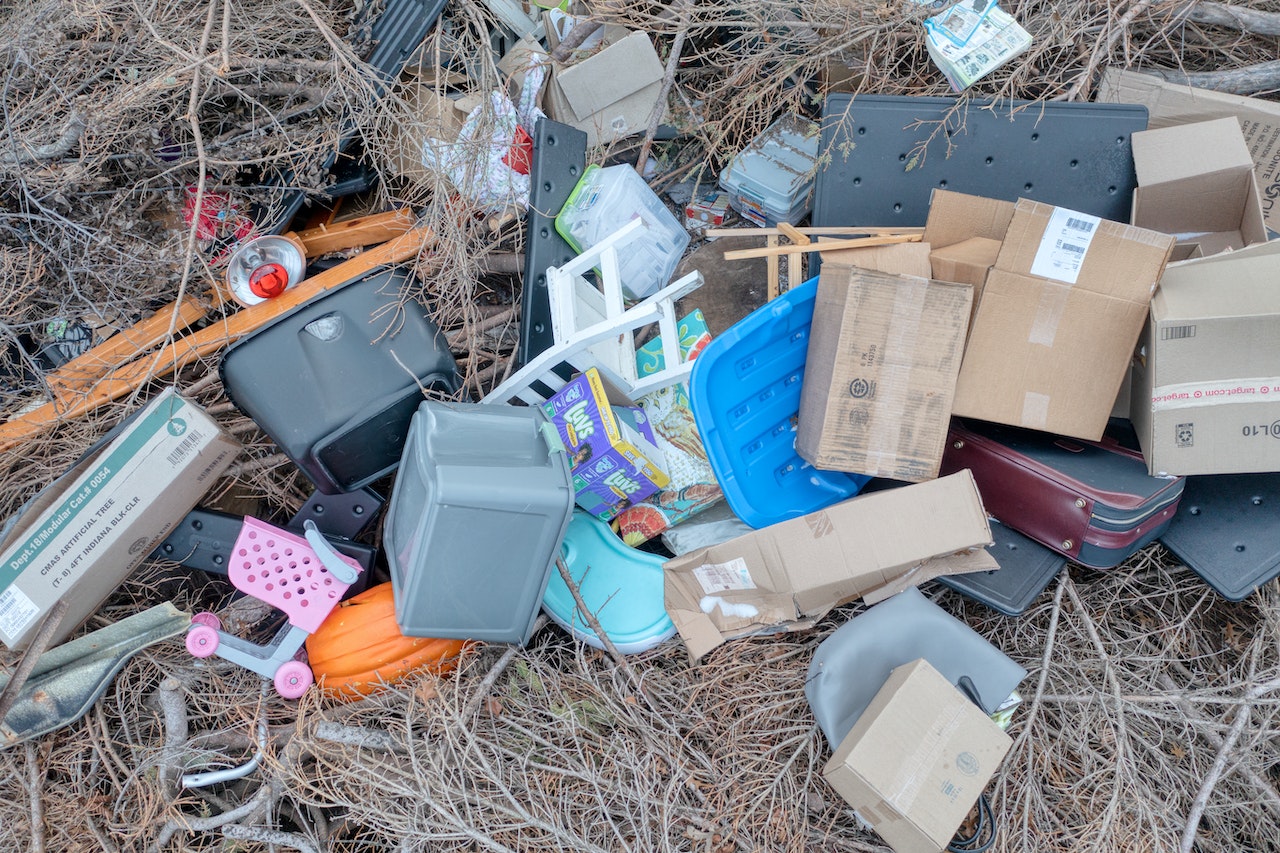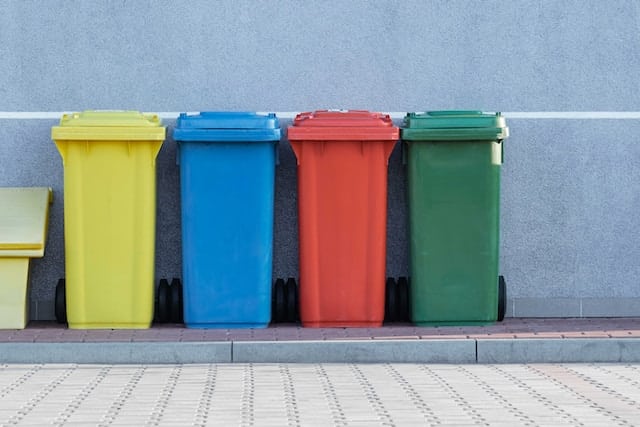
The management of waste is an integral part of our modern lifestyle. Yet, most of us must consider what happens to our garbage once it’s collected. Daily waste production in the U.S. is 292 million tons; that’s 4.9 pounds of trash per person! This figure includes a wide range of waste types, such as electronic waste disposal, solid waste disposal, biohazard waste disposal, and more. With the increasing volume of waste produced daily, it’s essential to understand the various waste disposal methods and their environmental impacts.
You will find information about waste disposal techniques, current waste management practices, and challenges here.
Different Types Of Waste and Their Disposal Methods
Effective waste management protects the environment and ensures public health. Proper waste disposal is essential to prevent environmental pollution and curtail the spread of diseases.
There are different types of waste, and their disposal methods vary accordingly.
Municipal Solid Waste (MSW)
MSW, or household waste, is generated from homes, schools, and businesses. This waste can include:
- Food scraps,
- Yard waste,
- Paper,
- Plastics,
- Glass, and
- Metals.
Municipal Solid Waste Disposal Methods:
Here are several solid waste disposal methods that are currently in use:
1. Landfills– Landfills are one of the most widely used solid waste disposal methods. Burying waste on specially designed land areas prevents contamination of the environment. It has modern landfill technology, such as liners and leachate collection systems, which helps to minimize the environmental impact.
2. Incineration- It involves burning waste at high temperatures (usually 1,000 degrees Celsius) to create ash and gas. This method is especially effective for hazardous waste.
3. Recycling– It involves processing waste materials into new products or materials. In addition to reducing landfill waste, this method preserves natural resources.
4. Composting– This method is the natural process of decomposing organic litter into nutrient-rich soil. This technique is an excellent method of waste reduction and promotes sustainable agriculture practices.
5. Construction Waste– Where can you dispose of concrete chunks? Rent a roll-off dumpster to dispose of concrete chunks quickly and affordably. Load the container and schedule your construction material pickup with a junk removal company. Or, dump it yourself, as your county landfills offer few free dump days per year for residents. You can also keep it on Craigslist to let contractors/DIY doers repurpose the concrete for free.
Concrete Disposal Costs Per Ton
The minimum concrete disposal cost is $23 per ton. Junk removal company charges $235 to $600 for a quarter/full bedload of concrete disposal. For oversized concrete, per load, it costs $30 for less than 10 tons, $60 for 10 to 15 tons, and $200 for 15 tons or over. For concrete with a PSI of 3,500, a surcharge of $25 per ton is applied.
Hazardous Waste
Hazardous waste includes–
- Chemicals,
- Heavy metals,
- Batteries, and
- Medical waste.
This type of waste presents a significant risk to human and environmental health, requiring special treatment and disposal methods.
Hazardous Waste Disposal Methods:
Except for landfill, incineration, and recycling, the other methods of waste disposal include:
1. Chemical Treatment– This method uses chemical processes to render hazardous waste harmless. It can consist of procedures like oxidation, neutralization, or precipitation.
2. Biological Treatment– This method uses microorganisms to break hazardous waste into non-threatening materials. This method is most effective for organic wastes like oils, fuels, or solvents.
Electronic Waste (E-waste)
E-waste is a rapidly expanding waste stream that includes–
- Discarded electronics like computers,
- Cell phones, and
- Televisions
These products contain toxic materials, including heavy metals and flame-retardant chemicals, that can leach into our environment if not disposed of properly. As a way to recover valuable materials and prevent contamination of the environment, it is important to recycle e-waste. Waste disposal services typically transport e-waste to certified e-waste recycling facilities.
Electronic Waste Disposal Methods:
Except recycling, the other waste disposal methods include:
1. Repurposing– Repurposing old electronics by turning them into something new is an effective way to reduce e-waste. For instance, old computers, laptops, and smartphones can become media players, gaming consoles, or servers.
2. Refurbishing– Refurbishing old electronics involves repairing or upgrading them to extend their lifespan. It reduces e-waste and saves money, as refurbished electronics are often cheaper than new ones.
Biohazard Waste
Waste contaminated with potentially infectious agents or other materials that are deemed a threat to public health or the environment are considered as bio-hazardous waste. There are several types of biohazard waste, including:
- Blood and human bodily fluids,
- Chemotherapeutic waste
- Infectious waste, and
- Animal carcasses.
The type of waste can be hazardous to human and environmental health, requiring specialized treatment and disposal methods. Biohazard waste disposal services follow strict protocols for transporting, treating, and disposing of this waste.
Biohazard Waste Disposal Methods:
Except for landfill and incineration, the other methods of waste disposal include:
1. Autoclaving– The autoclave sterilizes biohazardous waste by using steam and high pressure. In particular, the process can be used on non-incinerable waste, such as sharps and liquids.
2. Chemical disinfection– Chemicals like chlorine bleach kill or neutralize infectious agents in biohazardous waste. The method is effective, but it is important to handle chemicals and trash carefully.
Current Waste Disposal Management Practices and Challenges
Considering how much waste the United States produces, it is becoming increasingly obvious the issue of waste management needs serious attention. The following are some of these challenges:
Landfills are filling up faster
As the population grows and consumption rates rise, landfills will fill up faster. Solutions to this problem include–
- Landfill rehabilitation,
- Incineration, and
- Waste reduction initiatives.
No proper recycling
While recycling efforts have increased recently, many materials must be recycled properly, leading to contamination issues and excessive waste. Solutions to this challenge include–
- Improving education and outreach programs,
- Better sorting and processing of recyclables, and
- Implementing policies to make it mandatory for businesses and households to recycle.
Major E-waste Generation
Additionally, electronic waste is increasing rapidly. This e-waste contains dangerous chemicals that harm the environment and human health. Solutions to this challenge include–
- Regulatory action,
- The establishment of certified e-waste disposal facilities, and
- Implementing programs to encourage consumers to recycle their electronics properly.
Major Food waste
One of the biggest waste challenges we face is food waste. In the U.S. alone, up to 40% of all food produced goes to waste yearly. Solutions to this challenge include–
- Promoting sustainable food practices,
- Educating consumers about food waste, and
- Establishing composting centers.
Plastics Waste Generation
Plastic is a major contributor to the current waste management challenges in the U.S. due to its slow degradation rate and abundance. Solutions to this challenge include–
- Investing in infrastructure to recycle plastics,
- Promoting the use of biodegradable materials, and
- Enacting legislation to limit single-use plastics.
Why Is It Important To Reduce Waste Generation?
Let’s straighten some of the facts!
According to the World Bank, a 70% increase in waste generation is projected by 2050. This waste significantly impacts our planet, from polluting our oceans and harming our wildlife to contributing to climate change.
Reducing waste generation can help mitigate the extent of these negative impacts. The nearest approach to reducing waste in oceans or landfills can, to some extent, preserve the resources and environment.
Furthermore, individuals, businesses, and governments can effectively save costs by reducing waste and disposal.
Emission reductions are another important factor. In landfills, the waste decomposes into methane, a harmful gas 25X stronger than carbon dioxide. The reduction of waste generation can contribute to combating climate change and the reduction of emissions.
The advantages of reducing waste generation are very much clear:
- Preserving natural resources,
- Saving money,
- Protecting our environment, and
- Mitigating the negative impacts of waste on climate change.
So, for a start, we can take up concrete action toward waste reduction and move towards a sustainable future.
Take Action For Responsible Waste Management
The increasing amount means increased danger to the environment, health, and economy. To take action for responsible waste management, practicing the 3 Rs, i.e., reducing, reusing, and recycling, can go a long way.
To reduce waste, we could opt for different environmentally friendly products. For instance, rather than using plastic bags, we could use paper bags, and so on. We can also be mindful while purchasing and make sure to reuse and recycle when possible. Volunteering and educating communities about the 3Rs through different public and private organizations is necessary.
Hence, the easiest thing we can do regarding waste disposal is to separate our garbage, put our trash in the correct bin, and hire responsible waste disposal services to dispose of the garbage and take the necessary action.
The choices that we make today can reduce the pressure that’s already on our limited resources.
Frequently Asked Questions (FAQs)
Plastic bags take about 10-1,000 years, plastic bottles take 450 years, aluminum cans take up to 200 years, and glass bottles take over a million years to decompose. Additionally, food waste can take a few weeks to a few months to break into organic matter.
Garbage disposal waste typically ends up in a landfill, compacted and buried. However, other waste disposal methods exist, including incineration and recycling.
Plastics, particularly those made from petroleum-based materials, take the longest, i.e., hundreds of years, to decompose fully.
Improper waste disposal, such as littering, incineration, and landfilling, can lead to air and water pollution, soil contamination, and greenhouse gas emissions.
To prevent improper waste disposal, we must educate communities on proper waste management, promote recycling and composting, enforce anti-littering laws, and create incentives for businesses to adopt sustainable waste disposal practices. Landfills should also be properly designed, maintained, and monitored for potential hazards.

